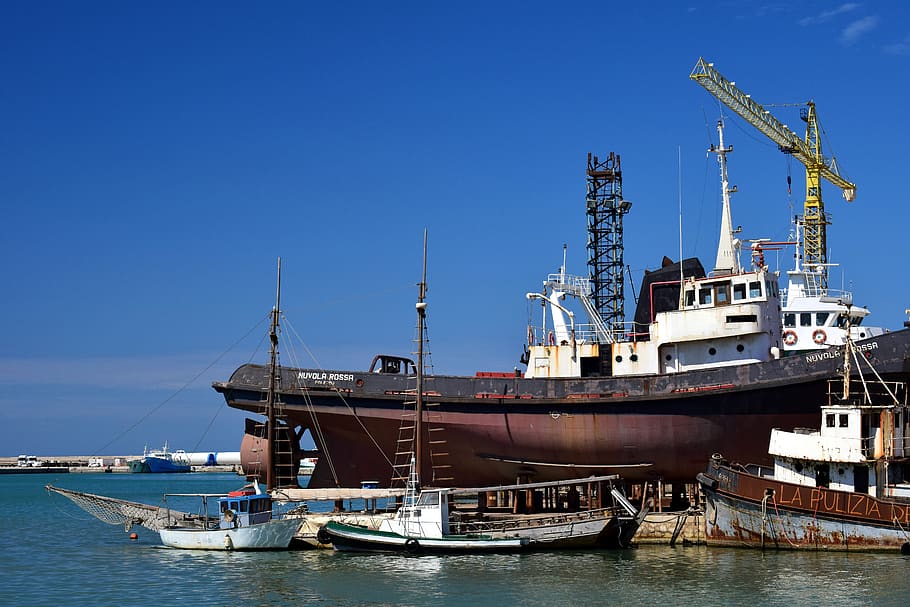In spite of challenges stemming from the aftermath of Covid-19, Vietnam’s shipbuilding sector has demonstrated impressive expansion, tenacity, and flexibility. Looking ahead, there exist substantial possibilities for investment and progress, along with a set of hurdles demanding attention. Bearing this in consideration, here is the essential information foreign corporations need to be aware of
Amidst the nation’s swift economic growth propelled by a flourishing manufacturing domain and export-driven vision, the shipbuilding industry faces the dual scenario of thriving prospects and escalating difficulties. Notably, it contends with amplified rivalry from international shipbuilders in diverse corners of the globe.
To sustain competitiveness, Vietnam’s shipbuilding realm must proactively embrace emerging technologies, effectively leverage its infrastructure, and address the pressing concern of a skilled workforce shortage.
This course necessitates substantial investments in research and training. Executed strategically, such investments possess the potential to yield substantial returns for stakeholders.
Vietnam’s Maritime Industry by the Numbers
Forecasts indicate a projected Compound Annual Growth Rate (CAGR) of 6 percent for Vietnam’s shipbuilding sector from 2023 to 2032. The cumulative value of produced vessels is anticipated to reach USD 680 million according to the Vietnam Shipbuilding Industry Research Report 2023-2032.
Significant investment has flowed into Vietnam’s shipbuilding since 2002. Approximately 120 marine shipyards, varying in size, now operate across the country, with their annual output expanding tenfold over the past decade.
However, merely 5 percent of Vietnam’s export goods are transported by domestic carriers, as foreign counterparts claim a 95 percent market share. Noteworthy is the country’s reliance on imports of shipbuilding components, machinery, and materials primarily from South Korea, Japan, China, and Europe.
Moreover, the average age of Vietnam’s shipping fleet is rising, with ships averaging 21.9 years in age. This trend arises from ship owners’ hesitancy towards new technology promising superior fuel efficiency, as reported by the United Nations Conference on Trade and Development’s Review of Maritime Transport 2022.
Yet, the global stance is veering towards environmental consciousness, with potential trade policy and regulatory implications. Notably, policies like the European Union’s Carbon Border Adjustment Mechanism levy taxes on imports with high carbon emissions. This shift indicates that older vessels will require early upgrading to align with evolving environmental standards.
Global Collaboration and Vietnam’s Strategic Position
Vietnam’s shipbuilding sector has actively pursued partnerships with international counterparts to fortify capabilities and global competitiveness. For instance, Japan’s transfer of military technology to Vietnam for constructing military ships exemplifies this trend.
Vietnam’s participation in the ASEAN Maritime Forum facilitates regional maritime issue resolution and knowledge exchange. This collective effort empowers shipbuilders across member states, including Vietnam, to enhance capacities and compete effectively on a global scale.
Vietnam’s Advantageous Geographical Landscape
Vietnam boasts an extensive coastline along the South China Sea and the Gulf of Thailand. Additionally, it claims the second-highest number of international ports within ASEAN.
Noteworthy among these ports are Ha Phong, Da Nang, and Ho Chi Minh City, all ranking among Asia’s prominent container ports. Hai Phong International Container Terminal (HICT) welcomes large container ships, reducing transit times and expenses for northern Vietnam and even China. Similarly, the Da Nang port plays a pivotal role in trade, connecting Vietnam with Myanmar, Thailand, and Laos.
Challenges on the Horizon Gloomy Export Market Outlook
An export downturn could suppress demand for new vessels. Vietnam’s export turnover experienced a 12.1 percent decline in the initial six months of 2023, attributed to rising inflation and decreased consumer demand. This trend is anticipated to persist and directly impact the market’s appetite for new ships.
Skills Shortage
Vietnam grapples with an inadequate pool of skilled shipbuilders. The Vietnam Maritime University (VMU) reported diminishing shipbuilding enrollments in terms of quantity and quality. In 2008, VMU had 395 shipbuilding students; by 2019, the annual intake had dwindled to just 13. Conversely, demand for shipbuilding engineers in both domestic and foreign enterprises has risen steadily, averaging about 100 engineers annually.
Infrastructure Constraints
By early 2022, Vietnam had 68 new shipbuilding and repair facilities, along with 97 shipyards boasting tonnage exceeding 1,000 DWT. Nevertheless, the sector’s repair capacity fulfills merely 42 to 46 percent of the national fleet’s requirements. This is partly attributed to a lack of automation and disparate technical equipment utilized in new ship construction, as outlined by Industry and Trade Magazine.
Key Industry Players
Ba Son Corporation
Established in 1863, Ba Son Corporation boasts extensive experience in shipbuilding, ship repair, and mechanical processing. It stands as Vietnam’s sole high-tech combat shipbuilder (missile ship), contributing to the Vietnamese People’s Army with various fast-attack missile ship models.
Hyundai Vietnam Shipbuilding Company
Formed in 1996, Hyundai Vietnam Shipbuilding Company Limited (HVS) is a joint venture between Hyundai Mipo Shipyard (Korea) and Shipbuilding Industry Corporation (SBIC – Vietnam). HVS has emerged as Southeast Asia’s largest shipyard after transitioning to the new building sector in the late 2000s. Presently, the company has delivered 157 cargo ships to global clients, spanning Italy, Japan, Korea, Greece, Denmark, and Singapore.
Conclusion
In conclusion, foreign investors seeking opportunities within Vietnam’s shipbuilding industry can anticipate promising horizons, counterbalanced by intricate challenges. The nation’s burgeoning economy and strategic positioning create an appealing investment landscape. However, maximizing returns necessitates a clear understanding of the competitive landscape, prudent allocation of resources for technological advancements, and adept navigation of potential workforce-related hurdles.

